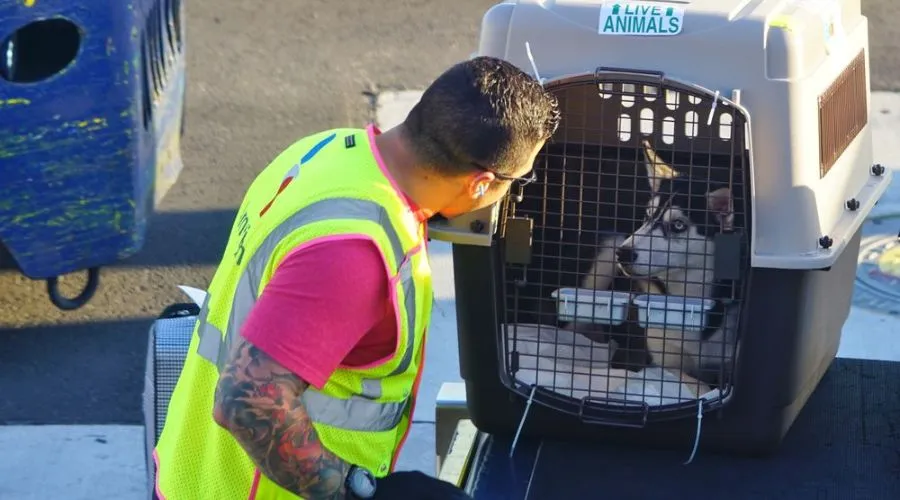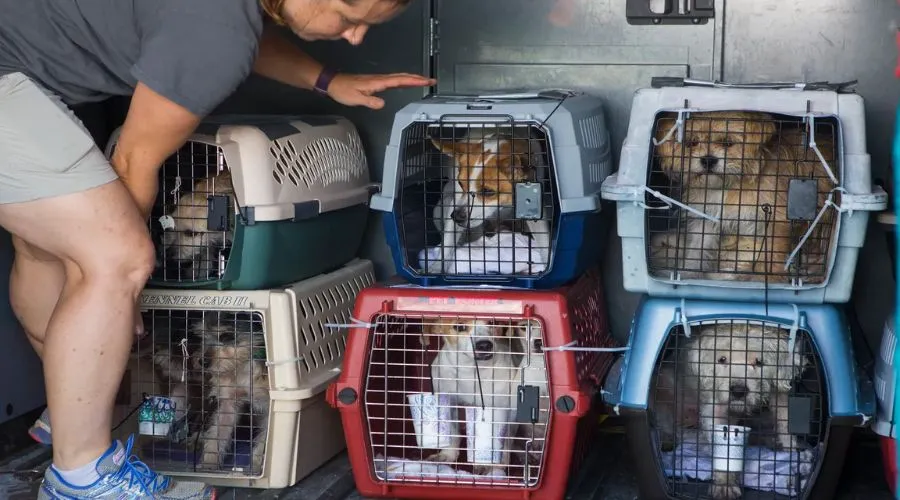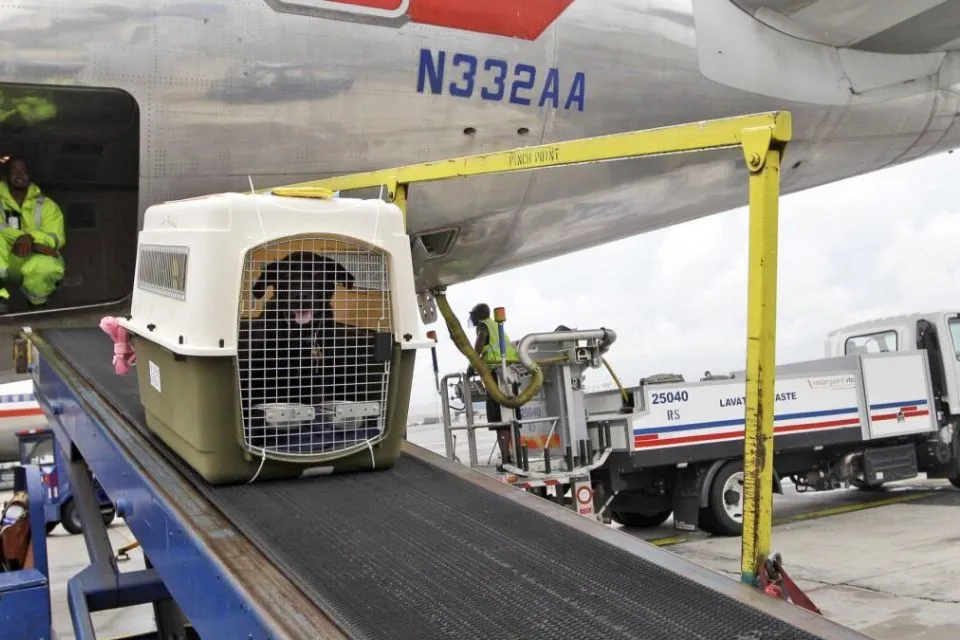Travelling to new places with your pet can be exciting but also scary. Plan and follow the rules to keep your pet safe and comfortable during the journey. This will assist in reducing any concerns you may have as you go. Thankfully, Condor Airlines provides the greatest animal Transport services, so you and your four-legged friend can have an easy time. We’ll walk you through all you need to know about pet travel transportation with Condor in this extensive guide.
Understanding Animal Transport With Condor

Animal Transport With Condor | neonpolice
When you fly with your beloved pet on Condor Airlines, you have two options. Your furry friend can either travel in the roomy cargo hold or stay with you inside the cosy cabin. Each choice comes with its own rules and details, so it’s important to think carefully to make sure everyone has a smooth and happy trip.
Let’s start by discussing pet travel in the cabin. This option allows you to take your beloved pet along for the entire journey. However, this convenience does come at a higher price point compared to cargo transport. Only small dogs and cats that can comfortably fit in a soft carrier under the seat in front of you are allowed in the cabin. Strict size restrictions are applied by Condor on these in-flight pet carriers. Also, remember that Condor, like many airlines, limits the number of dogs allowed in the cabin for safety reasons.
Your pet can travel in the secure, climate-controlled cargo hold below if it is too large for the cabin. Even if your pet won’t travel with you, cargo hold transportation is typically less expensive than in-cabin service. This makes it perfect for larger canine breeds and other animals that need extra room, including birds or rabbits. Pet parents must, however, make sure the hard-sided travel cage satisfies all of Condor’s size specifications and is permitted by the airline. There is also additional documentation like health certificates that are mandatory for pets travelling in the cargo area.
Pet parents must, then, balance the ease and closeness of in-cabin animal transportation against the usually cheaper but more stringent standards of cargo-hold pet transportation. Regardless of the choice you make, Condor has policies in place to put your pet’s safety and comfort first at every turn.
Also, Read- THE ULTIMATE GUIDE TO PLANNING YOUR ZANZIBAR VACATION
Tips & Tricks On Animal Transport

Tips & Tricks On Animal Transport | neonpolice
1. Selecting the Appropriate Travel Crate
If you’re sending your pet in the cargo hold, get a sturdy, airtight crate that the airline approves. Make sure the crate is big enough for your pet to move around comfortably.
2. Acclimating Your Pet to the Travel Crate
It’s critical to acquaint your pet with the travel crate well in advance of the move to reduce stress and anxiety in them. Start by leaving the crate open and stocking it with familiar and beloved toys and food to create a positive relationship. Gradually extend your pet’s time in the cage, and attempt to mimic short automobile rides for them.
3. The Day of Travel
When the day arrives for you to travel across unknown territory, you and your beloved might feel very uneasy. But careful planning and thorough preparation will be an important support system, guaranteeing a smooth and trouble-free trip.
4. Ensuring Your Pet’s Comfort
Before the trip, ensure your pet is well-nourished, rested, and hydrated, avoiding feeding too close to departure to prevent issues. Bring familiar comforts like favourite toys and blankets to maintain a sense of security during the journey.
5. Airport Check-In and Security
To guarantee a seamless check-in procedure, be at the airport well in advance. Prepare to provide all required paperwork and adhere to the airline’s particular pet travel policies.
6. In-Flight Considerations
Learn about the airline’s policies for feeding, sleeping, and other requirements if your pet is flying in the cabin. Make sure the crate for any dogs in the cargo hold is appropriately labelled, and make sure there is enough food and water inside for the duration of the trip.
7. Post-Relocation Care
The act of moving doesn’t conclude upon reaching your final site. Making the required preparations will guarantee that your pet transitions smoothly.
8. Adjusting to the New Environment
Your pet may experience anxiety when moving to a new location. To make people feel at ease, it’s a good idea to provide a serene and cosy area. To facilitate a smooth adaptation process, adorn their personal domain with cherished playthings, cosy resting spaces, and other items they readily associate with, thereby fostering a reassuring ambience that alleviates the distress of this transitional phase.
9. Locating a Reliable Veterinarian
Your first goal in your new area should be to find a reliable veterinarian. They can support you with any health issues that may arise after the move, administer any required care, and look out for your pet’s general well-being.
Choosing Condor for Your Pet’s Journey
Condor Airlines is well known for providing pet travellers with secure and cosy travel options. You know that your pet will be in good hands because of our devoted team of professionals and our track record of success. Consider the following factors that make Condor the best choice.
- Comprehensive pet policies and reasonable restrictions
- Transparent and competitive fees for pet travel
- Excellent reputation for handling live animals with care
- Convenient flight routes and schedules
Also, Read- UNLOCK INSTANT ADVENTURE WITH LAST MINUTE FLIGHTS AND TIPS FOR THE BEST DEALS
Conclusion
Moving a pet can be a difficult undertaking, but with Condor Airlines, you can make sure that your pet travels safely and comfortably. When paired with thoughtful planning and preparation, Condor’s top-notch animal transport services will make the process effortless. Prioritise your pet’s comfort and well-being at all times, select the most appropriate form of transportation, familiarise yourself with Condor’s pet policy, and investigate country-specific regulations. Thanks to Condor Airlines, you’ll be well-prepared to set out on your adventure with your favourite travel partner by your side if you adhere to the instructions provided in this book. For more information on Animal transport, visit Neon Police.







